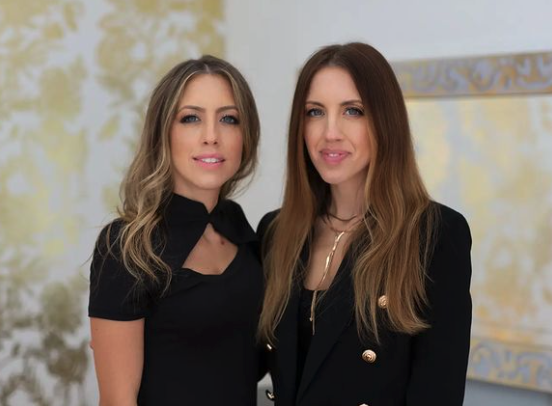Since introducing Vish to Luscious & Co, Liz and Jess Arrindell have more than recouped the $25k they missed out on the previous year due to the Covid-19 shutdown and closures.
The Surge of Success
In just six years, Luscious & Co Beauty located in Shelton, Connecticut has tripled in size, growing from a team of 10 to 30, quickly opening a second location in New Canaan, Connecticut. Such a massive leap in such a short time requires more than just an inspired vision and steely ambition; it hinges on the iron grip of management. But within the beauty industry, that grip must be felt as more of a light touch, otherwise, the entire organization could implode.
Fortunately, Luscious & Co is the rapidly growing baby of remarkable twins, Jess and Liz Arrindell, and with their love of data and determination to provide healthy, sustainable careers to their people, their touch is more a caress than anything fiercer.
Passion Project
Luscious & Co was born in 2012 when the twins swapped their sales jobs to dive head first into the beauty industry: they describe it as “running away from their corporate jobs towards their passion project.” They went back to school to qualify as bridal aestheticians. Initially starting as a mobile business, Luscious quickly grew as customers requested further services, and by 2014 they opened their first brick-and-mortar full-service salon.
“Our dream was to create an environment that provided the absolute best experience for our guests and stylists while providing healthy and sustainable careers for our team,” explains Jess. “From our business background, we knew how important it was to run our salon as a business; balancing our goals of creating long-term employees (for our well-deserving team) and providing exceptional services to our guests.”
Talking Pricing Strategies
Being savvy businesswomen they implemented a parts and labor pricing model, in which the variable cost of color is paid for by the client, with a labor cost that varies depending on the stylist’s level of expertise. A proven successful model that aids in protecting their salon profits.
“It’s the only way to separate the cost of the commissionable services and the cost of product charges, which is reinvested into our team and purchasing additional color supplies,” adds Liz. “Before we started using Vish clients were charged $8.50 per bowl. As you can imagine this left significant room for error as the weight of a color bowl is not a one-size-fits-all (not to mention the varying costs between the manufacturer and product types).”
Missed Color Charges
They also found that as the business expanded, they lost control over the charging of those additional bowls. As they closely monitored data patterns, they could see where stylists were charging for just one bowl at every service. Introducing Vish took the responsibility of charging clients for extra bowls away from the stylist. Any additional color mixed in Vish is automatically recorded and sent to the front desk to be added to the total ticket. A win for the stylists and the twins.
“Once we started using Vish, the charges were customized based on weight. This means some guests pay less than $8.50, and some pay more. It reflects our commitment to transparency, which guests appreciate,” says Jess. “This has significantly impacted profitability as the average cost of bowl color has increased to $14.” The Vish scale measures color to the tenth of a gram, ensuring that accurate color formulas are stored in the client’s history to be mixed with precision at the client’s next appointment.
Recouping Lost Revenue
The twins estimate that had they introduced Vish one year earlier, they would have seen an additional $25k in color and service revenue.
“We’ve more than made up on the previous year’s lost revenue since bringing in Vish,” adds Liz.
Running a business against rising costs and supply shortages can feel crippling if you aren’t prepared, which is why the twins value data so much. They recognize Vish as a significant tool to help maintain consistency and peace of mind. When color supply costs increase, they simply adjust the cost in their Vish database, which is reflected in guests’ formula costs. This type of support means Vish users can be responsive and not reactive in pricing.
“If we made the switch to Vish one year prior, we would have seen a difference of $25k in color/product revenue, but don’t worry, we made up for it the first full year of using Vish,” Jess exclaims.
